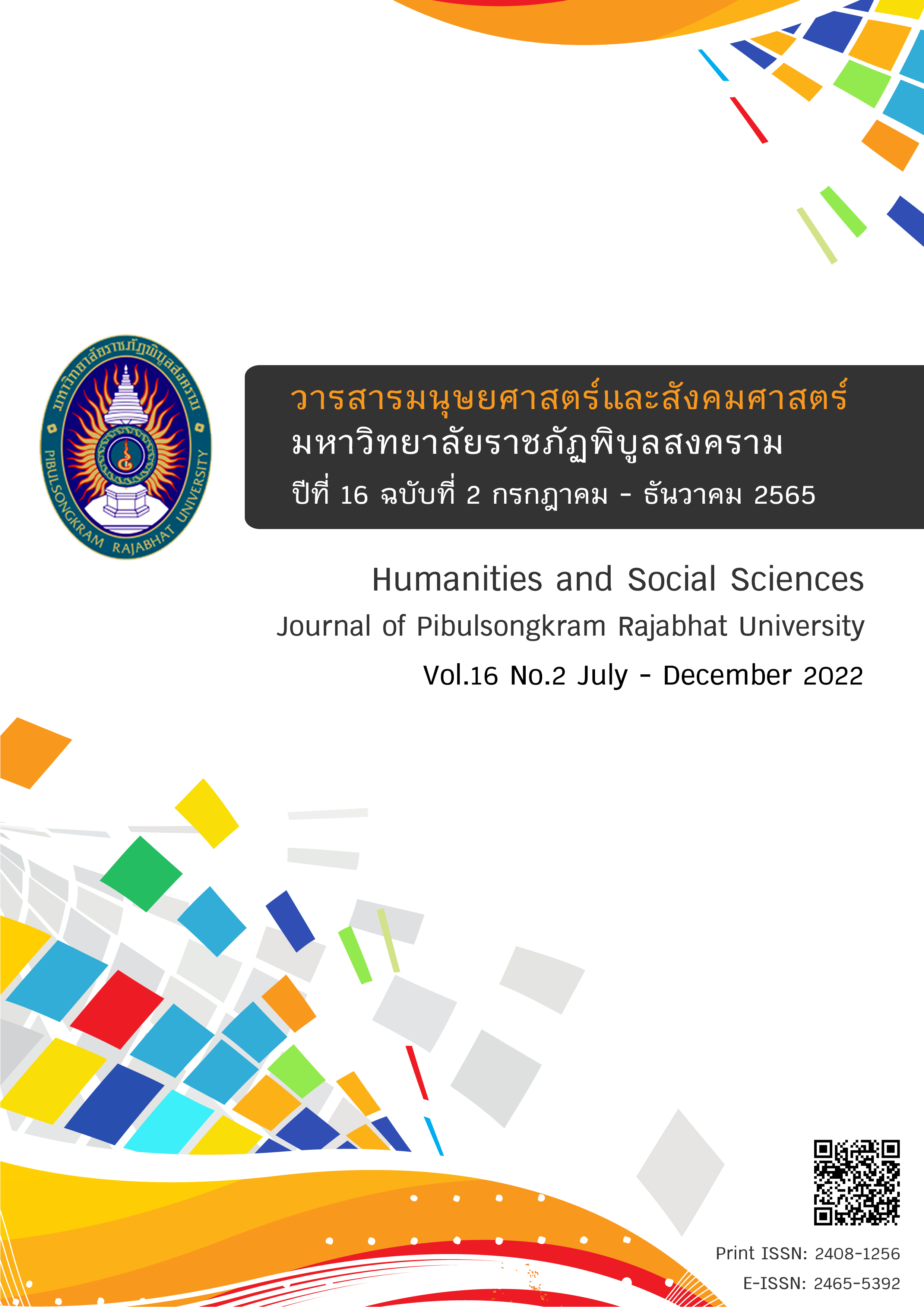Development of sugarcane contract farming practice in Luangnamtha province, Laos
DOI:
https://doi.org/10.14456/psruhss.2022.43Keywords:
Contract farming, Technical efficiency, Sugarcane productionAbstract
This research aim to analyze technical efficiency in sugarcane of contract farming. This is a co-research project between Thai and Lao researchers. Sing District in the northern part of Luangnamtha Province of Laos were selected as a sample area for the study because sugarcanes are mostly produced there in the form of contract farming. Research team selected sugarcane farmers (148 farmers) in 3 sample villages including Phiyer, Pa-Yai and Ta-Pao village for the survey. Data are collected and analyzed using variety of techniques such as descriptive explanation, mean comparison and Data Envelopment Analysis (DEA) to measure and compare productivity. The study finds that sugarcane market in Sing District of Laos is comparatively monopolistic. The relationship between farmers and buyers of sugarcane production in this contract farming (CF) business is characterized into 3 type. The first type is between head of production group or head of village and farmers. The second type is between village head and representative of Chinese company. And the third type is between farmers and the representative of Chinese company. It is found that the CF production provides better supply of factor of production. However, the risk and cost involved with CF production is not significantly different from that of other crop production. What can be clearly observed as a benefit of CF production is the improvement in welfare and livelihood of people in the community through an increase in employment and having more facilities and basic infrastructures provided by the company. On the other hand, the negative side of CF production facing the farmers is related to production and marketing issues. Nevertheless, in general the farmers are still seeing CF production as their future practice. The study also found that the second year of sugarcane production results in better net income compared with the production in other years. However, the production in the third year is more productive compared to other years. This shows that productivity could be improved in the second year of production. Therefore, the government and contracted company could come up with measures and directions to further improve productivity.
References
กนกวรรณ มะโนรมย์ และคณะ. (2553). โครงการวิจัย“การศึกษานโยบายการพัฒนาเมืองคู่มิตรด้านเศรษฐกิจ: กรณีศึกษาความร่วมมือด้านการเกษตรแบบมีพันธสัญญายั่งยืนระหว่าง จังหวัดอุบลราชธานี และแขวงจำปาสัก ประเทศลาว พ.ศ. 2551 – 2552”. คณะศิลปศาสตร์ มหาวิทยาลัยอุบลราชธานี.
สำนักงานกองทุนสนุนสนับงานวิจัย. (2553). คอนแทร็กต์ฟาร์มมิ่งไทย-ลาวพันธสัญญาที่ต้องหาทางแก้. (ระบบออนไลน์) แหล่งที่มา: http://pr.trf.or.th/index.php?option=com_content&view
สำนักวิจัยเศรษฐกิจการเกษตร. (2557). เกษตรพันธสัญญาเพื่อบรรเทาความยากจน (กรณีศึกษาจ.เชียงใหม่). (ระบบออนไลน์) แหล่งที่มา: http://oaezone.oae.go.th/assets/portals/1/files/Agricultural_Testament_Chiang_Mai49.pdf
Alton, C., Blum, D. and Sananikone, S. (2005). Para rubber cultivation in northern Laos: constraints and chance. Study for Lao-German program rural development in mountainous areas of northern Laos PDR, Vientiane.
Baumann, P. (2000). Equity and efficiency in contract farming schemes: the experience of agricultural tree crops. Working paper 139, Overseas Development Institute. London.
Fox, J. and Castella, C. (2010). Expansion of rubber (Hevea brasiliensis) in Mainland Southeast Asia: What are the prospects for small holders? Unpublished paper, National Agriculture and Forestry Research Institute, Laos.
Gibbon, S. and Jones, S. (2008). The Economics of Smallholder Organic Contract Farming in Tropical Africa. World Development, 37(6), 1094-1104.
Kherallah, M. and Kirsten, J. (2002). The new institutional economics: applications for agricultural policy research in developing countries. Agrekon, 41(2), 110-133.
Miyata, S., Minot, N. and Hu, D. (2009). Impact of Contract Farming on Income: Linking Small Farmers, Packers, and Supermarkets in China. World Development, 37(11), 1781-1790.
O’Donnell, C.J., Rao, D.S.P. and Battese, G.E. (2008). Metafrontier frameworks for the study of firm-level efficiencies and technology ratios. Empirical Economics, 34(2): 231-255.
Rao, D.S.P., O’Donnell, C.J. and Battese, G.E. (2003). Metafrontier functions for the study of intergroup productivity differences. CEPA Working Paper Series No. 01/2003, School of Economics, University of New England, Armidale.
UNDPLAO. (2006). Lao PDR: National socio-economic development plan (2006-2010). (Online). http://www.undplao.org/official%20docs/NSEDP%20partI.pdf.
Warning, M. and Key, N. (2002). The social performance and distributional consequences of contract farming: an equilibrium analysis of the Arachide de Bouche program in Senegal. World Development, 30(2), 255-263.
Warning, M. and Soo Hoo, W. (2000). The Impact of Contract Farming on Income Distribution: Theory and Evidence. Paper Prepared for Presentation at the Western Economics Association International Annual Meetings.
Downloads
Published
How to Cite
Issue
Section
License
Copyright (c) 2021 Humanities and Social Sciences Journal of Pibulsongkram Rajabhat University

This work is licensed under a Creative Commons Attribution-NonCommercial-NoDerivatives 4.0 International License.
Any articles or comments appearing in the Journal of Humanities and Social Sciences, Rajabhat Phibulsongkram University, are the intellectual property of the authors, and do not necessarily reflect the views of the editorial board. Published articles are copyrighted by the Journal of Humanities and Social Sciences, Rajabhat Phibulsongkram University.









